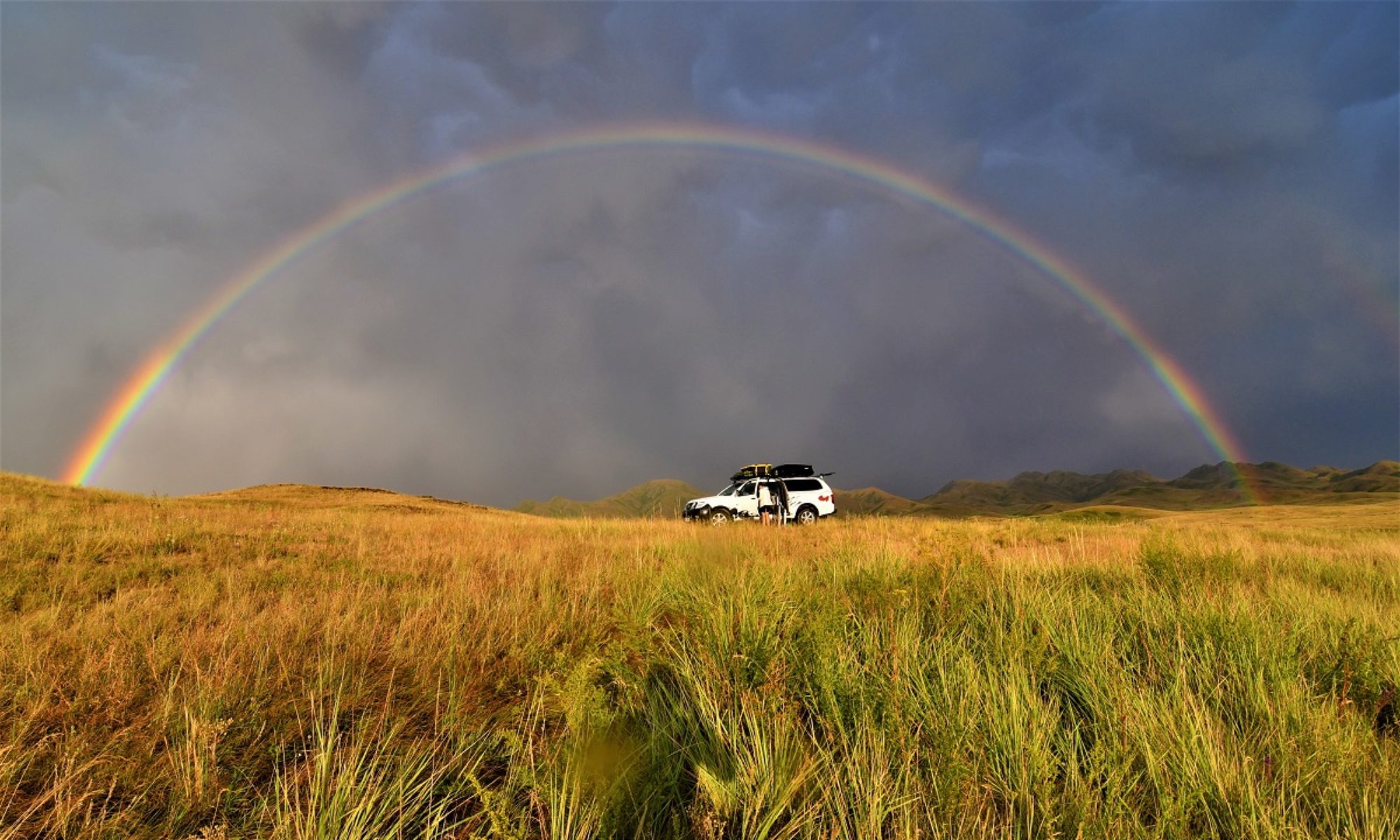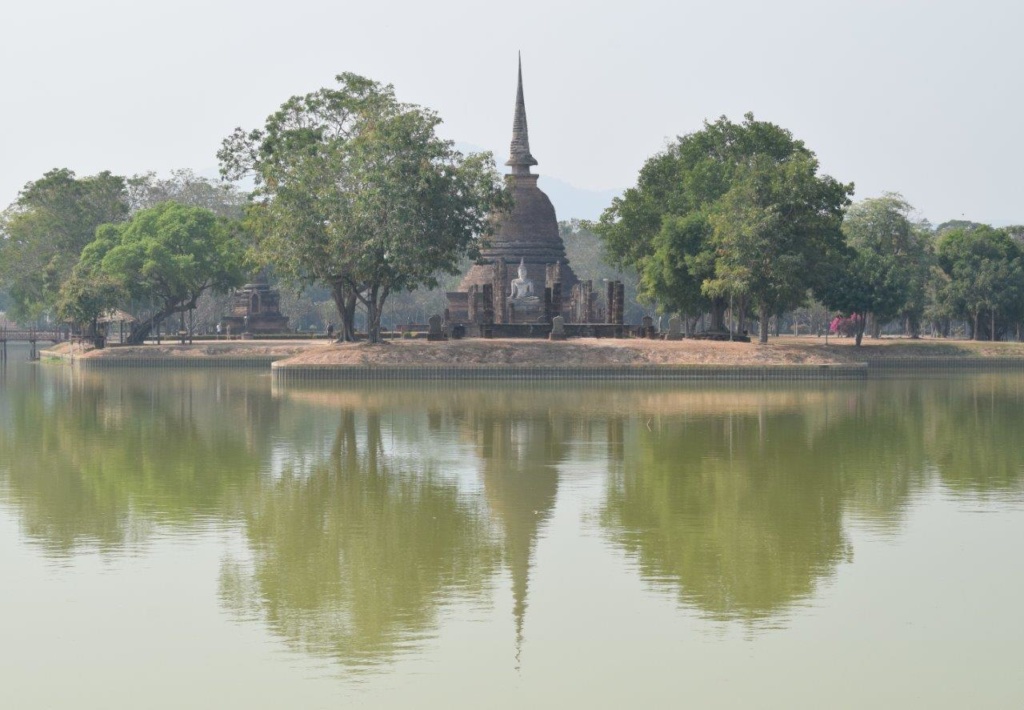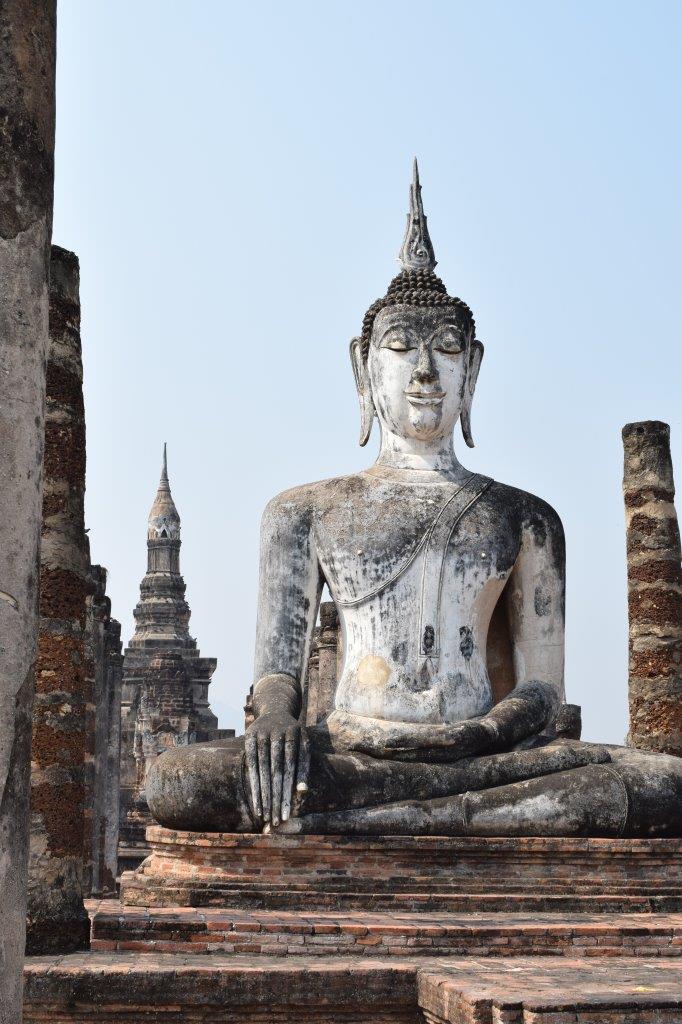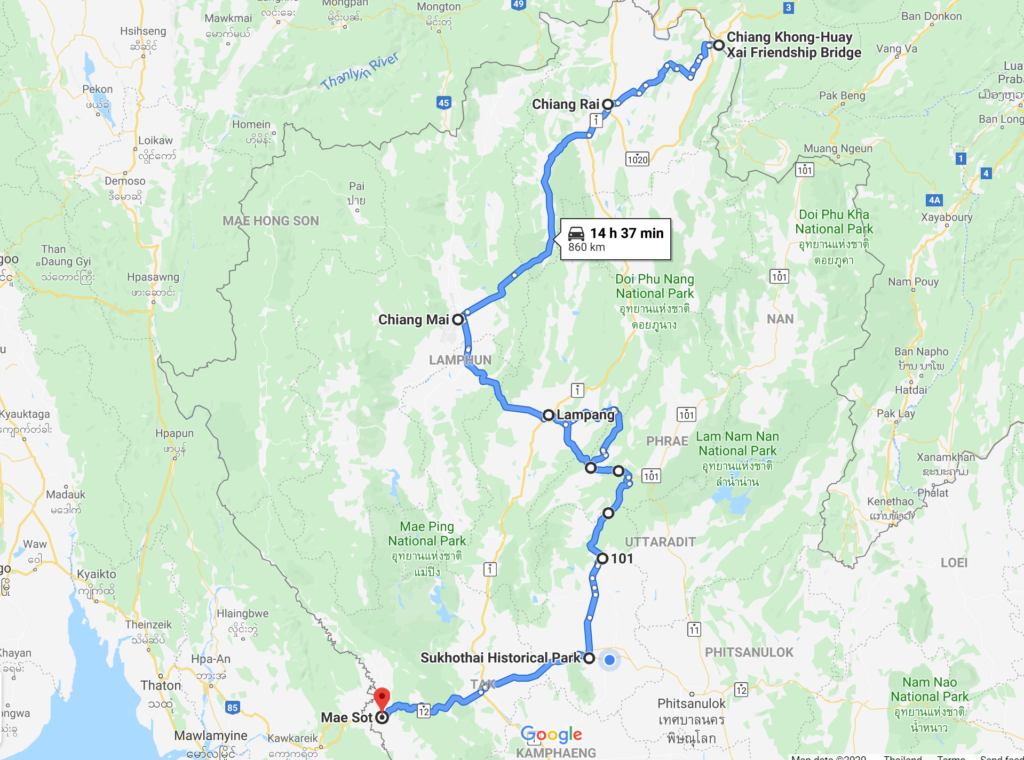
Saturday 4th January, 2020 – Chiang Rai
Drove to Chiang Rai from the border yesterday and found a hostel where we were the only one staying so had the place to ourselves !
We visited Wat Phra Kaew, one of the city’s most revered temple where the Phra Kaew Morakot ( Emerald Buddha) was discovered in 1434 ( according to the legend, lightning struck the temple’s Chedi and revealed the Bhudda figure). This is the Emerald Buddha which is now housed in Bangkok in Wat Phra Kaew, within the Royal Palace compound. ( a replica is shown here in Chiang Rai).
We also came across a flower exhibition with colourful flowerbeds and a tunnel entirely made of orchids.
Sunday 5th January – Tuesday 7th January, 2020 – Chiang Mai
The 700 year old city of Chiang Mai was built in 1296 to be the capital city of the Lanna Kingdom (the kingdom of a million rice fields) by its ruler King Mengrai. In the late 13th century the Lanna Kingdom covered most of Northern Thailand as we know it today as well as neighbouring parts of Myanmar (Burma), China and Laos. Back then it was bordered by Burma (now Myanmar) to the West, China to the North, the Khmer Empire of Angkor (now Cambodia) to the East and Siam (now Thailand) in the South.
Chiang Mai was the main trading town between southern China and the sea ports of Burma. As such it was frequently attacked by its neighbours and was successfully invaded and incorporated into Burma as a vassal state in 1557. Over the next 200 years Chiang Mai fell at various times under the rule of the strongest invader, be it Burma or Siam. The Lanna Kingdom eventually became part of Siam in late 19th century. It was gradually dissolved and condensed into a 20,000 km² area centered around Chiang Mai. In 1932 the whole Chiang Mai area officially became a province of Siam. Siam officially became known as Thailand in 1949.
The old city of Chiang Mai is found within the remnants of 700 years-old walls and square shape moat. There are numerous temples showing the distinctive features of northern Thai architecture (carved gables, colourful exterior mosaics, Singha lions garding the entrances and octagonal high based Chedi). We visited two of the main ones:
Wat Phra Singh: Chiang Mai most revered temple. Its resident Buddha “Phra Sing” ( Lion Buddha) draws in pilgrims and sightseers. It is housed in a small chapel, built in typical Lanna style with a three- tiered roof and carved gables. Inside, the lai-krahm (gold pattern stencilling) and murals are superb.
Wat Chedi Luang: Started in the 14th century, the construction was not completed until the mid-15th century. It was then 82 m high and had a base diameter of 54 m, at that time the largest building of all Lanna. In 1468, the Emerald Buddha was installed in the eastern niche . In 1545, the upper 30 m of the structure collapsed after an earthquake, and shortly thereafter, in 1551, the Emerald Buddha was moved to Luang Prabang (Laos). The Emerald Buddha has been moved numerous times following who was in power at the time ( see wikipedia link above)
Wednesday 8th and Thursday 9th January, 2020
Lampang is a centre for the ceramics industry due to local Kaolin deposits and you can see workshops all along the roads leading to the town . Historically logging was an important industry, large stand of teak covered the region. Many elephants were employed to transport the logs to the river for transport to Bangkok, hence the founding of an “elephant school”, the predecessor of the Thai Elephant Conservation Center which can be visited today. ( the old growth teak has all but gone).
We are leaving the mountainous north and the scenery as we approached Sukhotai was agricultural with fields of corn, vegetable growing and fruit trees.
Friday 10th January, 2020 – Sukhotai
Much of what constitutes modern Thailand can be traced back to the Sukhothai Kingdom, although some history dating back to this ancient period remains pretty much unclear and debatable. Before the rise of Sukhothai, Siam was made up of small fiefdoms, subject to the ancient Khmer Empire’s rule. Sukhothai’s founding monarch was able to consolidate power and succeed the Khmer as the ruler of newfound Siam.
As the first capital of Siam, the Sukhothai Kingdom (1238 – 1438) was the cradle of Thai civilisation – the birthplace of Thai art, architecture and language. ‘Sukhothai’ means ‘the dawn of happiness’, and the kingdom did enjoy an extended period of peace and prosperity until it was annexed by the Ayutthaya Kingdom. (we visited Ayutthaya earlier in our trip)
The ruins of Sukhothai , registered UNESCO World Heritage comprise a vast number of historical sites and temple ruins and cover an area of 70sqkm. The Historical Park is divided in five zones, we visited the central zone only, which houses the most well-preserved and impressive ruins.
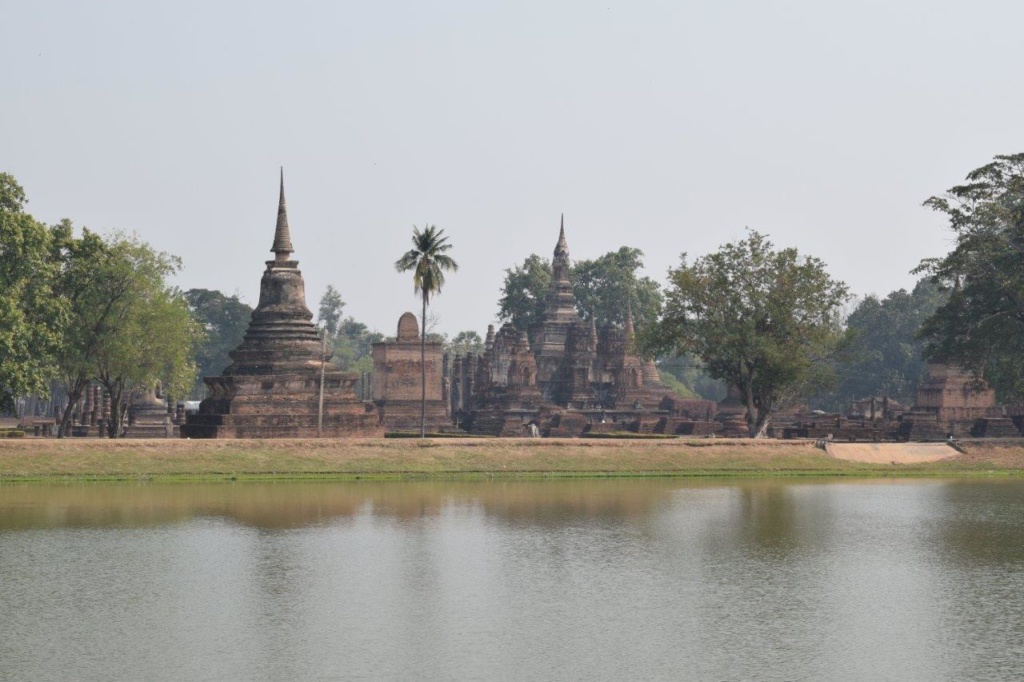
Wat Mahathat: completed in the 13th century, the temple is surrounded by brick walls and a moat that is believed to represent the outer wall of the universe and the cosmic ocean. The chedi spires feature the famous lotus-bud motif typical of the Sukhotai period. Some of the original stately buddha figures still sit among the ruins of the temple which is believed to have been the former spiritual and administrative centre of the old capital.
Wat Si Sawai: Buddhist shrine dating from the 12th and 13th century featuring three Khmer-style towers. It was originally built by the Khmers as a Hindu temple.
Wat Sa Si: Also known as the “Sacred Pond Monastery”, the temple sits on an island. It’s a simple classic Sukhotai-style wat containing a large Buddha.
Saturday 11th January, 2020 -Mae Sot
Drove the remaining km to the border town of Mae Sot as we are due to cross into Myanmar tomorrow.
